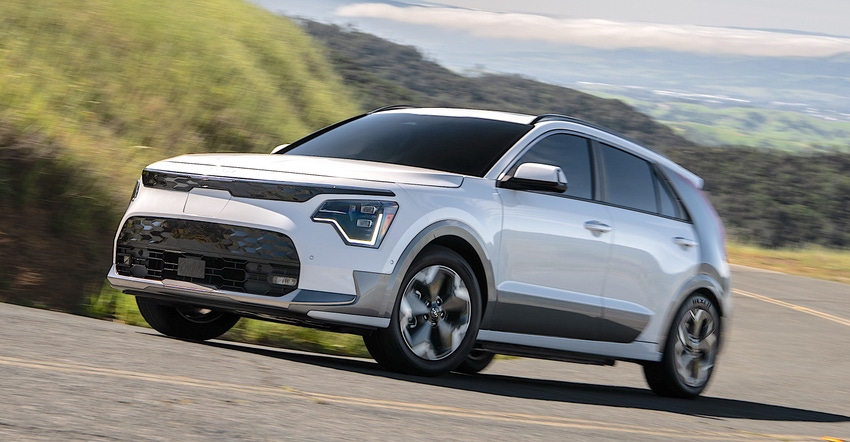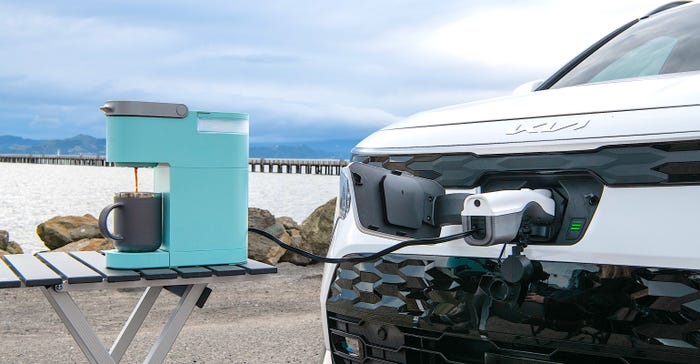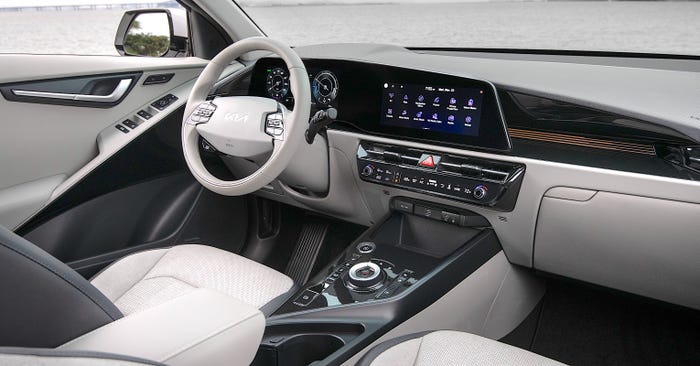The Niro EV hits the emerging sweet spot in the market for EVs with reasonable price and acceptable driving range.

There is no doubt that EVs that are built on dedicated electric-only platforms will be optimized for cost, weight, and space efficiency compared to EVs built on platforms shared with combustion and hybrid-electric powertrains.
However, considering the EV supply chain constraints, the variability of demand for various powertrain types, and the value of being able to see different mixtures of products in different markets using the same platform, vehicles like the 2023 Kia Niro EV make practical sense.
Even with any theoretical handicaps compared to dedicated EV-only vehicles, the Niro boasts an impressive combination of a 253-mile average estimated range and a bottom-line price for the fully loaded “Wave” trim package of $45,875. The basic “Wind” version starts at $40,875.
Either way, you get a 201-horsepower electric motor driving the car’s front wheels. It taps power from the 64.8-kilowatt-hour 358-volt lithium-ion battery pack to accelerate the 3,800-lb. Niro EV to 60 mph in 7.8 seconds. This is plenty quick for a normal family car in the real world, even if it falls short of the cartoonish acceleration some EVs can produce.
The available 11-kW on-board charger trims Level 2 AC charging times by three hours, to just 6:05 compared to the standard 7.2-kW on-board charger, if the charging station supports it. My ChargePoint home charging station maxes out at 9.6 kW, so it wouldn’t be able to take full advantage of the 11-kW onboard charger’s potential.

Kia says that the Niro EV can achieve an 80 percent state of charge from a DC fast charger in just 45 minutes on a 100 kW charger. Because it is not an 800-volt design, there is no additional benefit from plugging into a 350 kW charger, though I’ve noticed previously that using a charger rated to more power than the car can accept will result in charging that is more consistently near the car’s rated maximum. On a 50-kW charger, that 80-percent charge will take 65 minutes.
That charging port is in the front of the car, where it is most easily accessible by most charging stations. The port’s literal party trick is its ability to serve as a virtual generator, powering electric devices at tailgate parties or campsites. In case of a power outage, it can even run a home refrigerator for days.

The Niro is pleasant and comfortable to drive, befitting a five-passenger hatchback transportation appliance. The optional heat pump system provides comfort without sapping the battery as badly as electric resistance heat would. Like most EVs, however, the Niro’s heat does not seem to correspond with the selected temperature, so passengers can either rely on the seat heaters (it has heated rear seats too), or turn up the temperature to a higher number than usual.
The electric drivetrain coasts when the driver lifts off the accelerator pedal, providing a familiar feeling for combustion car drivers. But the steering wheel-mounted paddles, which have no gears to shift in the Niro EV, let drivers bring the car to a gentle stop while regenerating electricity just by squeezing the left paddle. It seems like a decent solution for customers who prefer the one-pedal experience.
The console-mounted gear selector is the rotary type. It is spring-loaded so it returns to the center after twisting counter-clockwise for Reverse or clockwise for Drive, so its current status is not visibly obvious. A shifter that clicks into position and stays there provides another layer of understanding for the driver to help avoid accidents when the driver doesn’t realize whether the car is going to go forward or backward.
The controls for the HVAC and infotainment are unfortunately befuddling. Kia employs the same rotary knobs, which are preferred for their ease of distraction-free control while driving, for both systems. The driver has to take their eyes off the road to press the capacitive touch switch to the right of the volume/heat knob to switch between the functions. This is as bad as those window switches in the Volkswagen ID.4 whose function switches between controlling the windows in the front doors and the rear ones.
This is a frustration, but probably not a big enough one to deter a purchase. The Niro EV provides a lot of electric car for the money and represents a great example of making the most of a mid-size battery pack to keep cost, weight, and charging times reasonable.
About the Author(s)
You May Also Like





